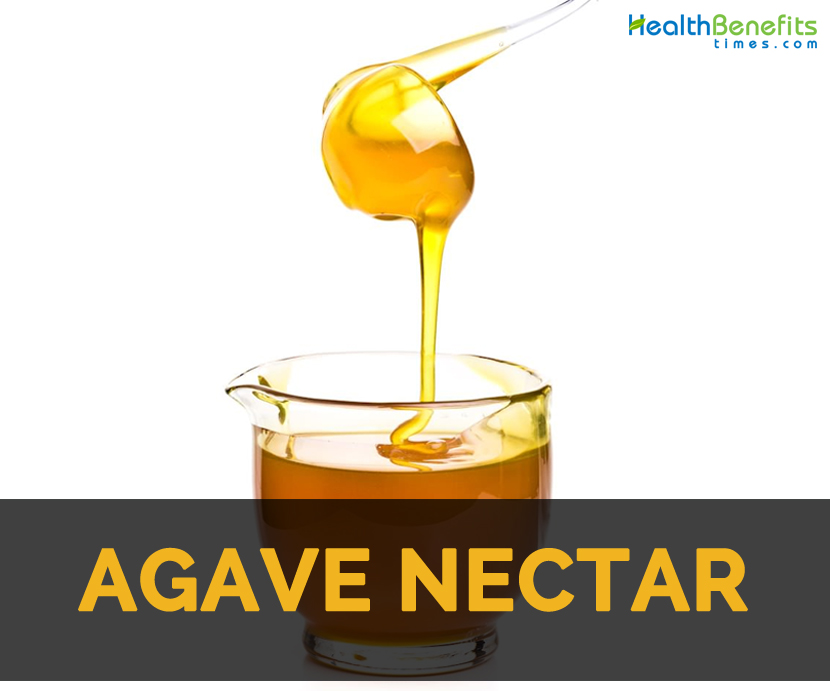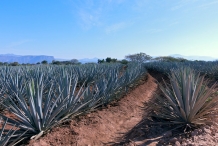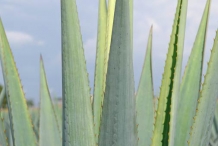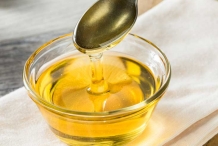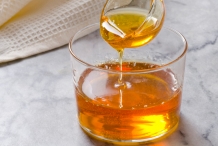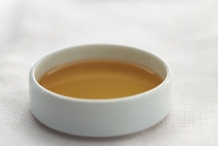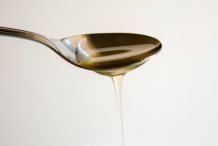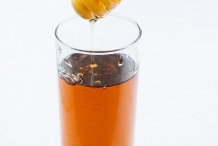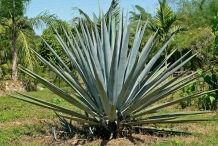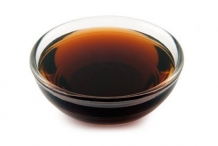Agave is 1 ½ times sweeter in comparison to regular sugar and possesses about 60 calories per tablespoon which resembles 20 calories more than same amount of table sugar. It also contains fructose as carbohydrate determining sweetening properties. Agave syrup is produced by cutting off the leaves of A. tequilana and Agave Americana plants after grown for seven to fourteen years. Then juice is extracted from core of agave known as piña. The juice is filtered and heated in order to break polysaccharides into simple sugars. Fructan, a polymer of fructose molecules, is the main polysaccharide. The filtered juice is concentrated to syrupy liquid but is slightly thinner in comparison to honey. The color of Agave nectar varies from light to dark amber that depends on degree of processing.
Agave nectar is regarded as a natural alternative to artificial sweeteners and refined sugars. Leaves produce sap that resembles honey. Due to its thin consistency, it is served as a topping for pancakes, fruit salads and ice cream. It could also be used as a replacement of sugar in baked recipes.
Substitute Agave Nectar for Other Sweeteners
- Honey
1 cup of honey = 1 cup of agave nectar
- Brown rice syrup
1 cup brown rice syrup = 1/2 to 1/3 cup agave nectar (Increase other liquids in the recipe by up to ½ cup)
- Maple syrup
1 cup of maple syrup = 1 cup of agave nectar
- Granulated/white sugar
1 cup of white sugar = 2/3 cup agave nectar and reduce other liquids in the recipe by 1/4 to 1/3 cup
- Corn Syrup
Use ½ as much agave, and increase other liquids in the recipe by up to 1/3 of a cup.
- Brown sugar
1 cup of brown sugar = 2/3 cup agave nectar and reduce other liquids in the recipe by 1/4 cup
Traditional uses
- It is used to treat skin complaints.
- Agave is used to cure bruises, burns, skin injuries, minor cuts and irritation caused by insect bites.
- In Central America, juice of agave plant is used to treat wounds.
- Mayans and Aztecs mixed agave juice with egg whites and this poultice is applied topically to skin to promote wound healing.
- This plant is used for excessive gas, weak digestion and constipation.
- This plant is also used to provide relief from stomach inflammation, ulcers, jaundice, stomach inflammation and liver diseases.
- Agave contains laxative properties that provide relief from dysentery, tuberculosis and diarrhea.
- The poultice made from leaves and roots are used to treat toothache.
- Agave effectively promotes perspiration and provides relief from high fever.
- Women with menstrual problems should consume agave.
Precautions
- People who are intolerant to fructose should avoid agave syrup.
- It should also be avoided by the people with hyperuricemia, uric acid and gout attacks because it produces high level of uric acid.
- Similar to sugar, it could cause gum disease or cavities if one is not able to maintain oral hygiene.
- Use it with caution becaue the excess consumption of fructose might cause health problems such as increased bad cholesterol, blood triglycerides and uric acid.
How to Eat
- Agave syrup is used in drinks with stronger flavor and dishes.
- Dark agave syrup provides distinct flavor to poultry, desserts, seafood and meat dishes.
- Amber and dark agave syrups are used as toppings for waffles, pancakes and French toast.
- It could be served as toppings for ice cream, pancakes and fruit salads.
- In baked recipes, it could be used as a substitute for sugar.
- It could be used as honey in desserts.
- As it dissolves easily, agave nectar is used as a sweetener for drinks such as iced tea.
- It is used to sweeten food and drizzle over porridge, yogurt or cereal.
- It is also used for salad dressings.
References:
https://en.wikipedia.org/wiki/Agave_nectar
https://draxe.com/agave-nectar/
http://www.edenproject.com/learn/for-everyone/plant-profiles/agave
https://www.bbcgoodfood.com/glossary/agave-syrup
https://whatscookingamerica.net/CharlotteBradley/AgaveNectar.htm
https://www.botanical-online.com/english/agave-nectar-contraindications.htm
Comments
| Agave nectar Quick Facts | |
|---|---|
| Name: | Agave nectar |
| Origin | Native to arid and semiarid regions of the Americas, particularly Mexico, and the Caribbean. |
| Colors | Light, amber, dark |
| Shapes | Liquid form |
| Calories | 170 Kcal./cup |
| Major nutrients | Carbohydrate (32.31%) Vitamin C (10.33%) Vitamin K (10.33%) Vitamin B6 (9.92%) Vitamin B2 (7.00%) |
| Name | Agave nectar |
|---|---|
| Native | Native to arid and semiarid regions of the Americas, particularly Mexico, and the Caribbean. |
| Common/English Name | Agave syrup, Agave, Agave nectar |
| Syrup Color | Light, amber, dark |
| Flavor | Caramel |
| Consistency | Thinner |
| Leaves | Pale green to blue-grey |
| Spines | 5 cm long |
| Stem | 200 x 25 cm |
| Flower | Yellow, pale green, red; 10 cm long |
| Fruit shape & size | Oblong, 5 cm long |
| Seed | Black |
| Major Nutritions | Carbohydrate 42 g (32.31%) Vitamin C (Ascorbic acid) 9.3 mg (10.33%) Vitamin K (phylloquinone) 12.4 µg (10.33%) Vitamin B6 (Pyridoxine) 0.129 mg (9.92%) Vitamin B2 (Riboflavin) 0.091 mg (7.00%) Vitamin B1 (Thiamin) 0.067 mg (5.58%) Vitamin B9 (Folate) 16 µg (4.00%) Vitamin E (alpha-tocopherol) 0.54 mg (3.60%) Vitamin B3 (Niacin) 0.379 mg (2.37%) Selenium, Se 0.9 µg (1.64%) |
| Calories in 0.25 cup (55 g) | 170 Kcal. |


